
from seed to plant by gail gibbons pdf
Gail Gibbons’ From Seed to Plant is a captivating book that explores plant life cycles, seed formation, and growth. Published by Holiday House in 1991, it offers a simple, engaging introduction to botany for young readers, blending education with entertainment.
1.1 Overview of “From Seed to Plant”
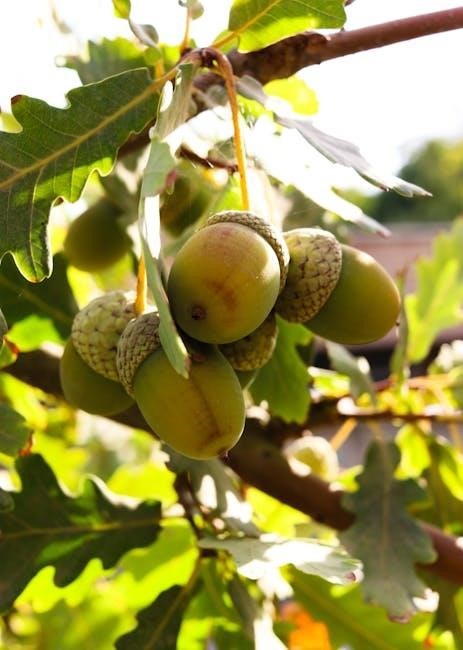
Gail Gibbons’ From Seed to Plant is an engaging, informational book that explores how seeds develop into plants. Published in 1991 by Holiday House, it delves into the life cycle of plants, seed formation, and growth. The book explains how seeds are scattered, planted, and nurtured, making it a perfect resource for young learners. With simple language and vibrant illustrations, Gibbons introduces concepts like pollination, germination, and plant care. The text also highlights the importance of plants in our ecosystem. Available in PDF format, this book is accessible for readers worldwide, offering a fascinating journey into botany tailored for children. It fosters curiosity and a deeper appreciation for nature.
1.2 Target Audience and Purpose
Gail Gibbons’ From Seed to Plant is primarily designed for young readers, making it an excellent resource for early childhood education. The book’s simple language and vibrant visuals cater to children aged 4–8, introducing them to basic botanical concepts. Its purpose is to educate kids about plant life cycles, seed development, and growth processes. The text encourages curiosity and an appreciation for nature, while its accessible format makes it ideal for classroom use or home learning. Available in PDF, it provides easy access for parents and educators seeking engaging, informative content for young learners. This book aims to spark an early interest in botany and the natural world.
Key Concepts Covered in the Book
From Seed to Plant covers the life cycle of plants, seed formation, germination, and pollination. It explains how seeds disperse and grow into plants, engaging young learners with clear, visual explanations.
2.1 The Life Cycle of Plants
Gail Gibbons’ From Seed to Plant introduces young readers to the fascinating journey of plant growth. The book explains the life cycle of plants, starting from a tiny seed and ending with a mature plant ready to produce seeds of its own. It highlights key stages such as germination, sprouting, and the development of roots and leaves. The process of photosynthesis is also simplified, showing how plants use sunlight, water, and air to grow strong. This section provides a clear, engaging foundation for understanding how plants develop and sustain themselves, making botany accessible to early learners.
2.2 Seed Formation and Development
Gail Gibbons’ From Seed to Plant delves into the process of seed formation and development. Seeds begin as ovaries within flowers, transforming after pollination. The ovary grows into a fruit, while the embryo inside the seed develops. Over time, seeds mature and dry, preparing for germination. The seed coat hardens to protect the embryo, and stored food supplies energy for growth; This section explains how seeds adapt to survive and thrive, ensuring the continuation of the plant’s life cycle. Gibbons’ clear descriptions and visuals help young readers understand the intricate process of how seeds form and prepare for new life. This foundational knowledge sparks curiosity about botany and nature.
2.3 The Process of Germination
The process of germination, as explained in From Seed to Plant, is the magical beginning of a plant’s life. A seed, once dormant, begins to grow when conditions like water, warmth, and light are met. The seed absorbs water, softening its coat, and the embryo inside stirs. Roots emerge first, anchoring the plant, followed by shoots that push upward toward sunlight. Gibbons illustrates how the seedling develops its first leaves, marking the start of photosynthesis. This section highlights the importance of patience and the right environment for a seed to sprout, inspiring young readers to explore the wonders of plant growth and biology.
2.4 The Role of Pollination
Pollination is a vital process in plant reproduction, as Gail Gibbons explains in From Seed to Plant. It involves the transfer of pollen from the male part of a flower (the anther) to the female part (the stigma). This process is often carried out by bees, butterflies, birds, and even the wind. Pollination allows flowers to produce seeds, which eventually grow into new plants. The book highlights how pollinators play a crucial role in this process, ensuring the survival of plants and the production of fruits and vegetables. This section helps young readers understand the interconnectedness of plants and pollinators in nature.
Educational Value of the Book
From Seed to Plant by Gail Gibbons offers a wealth of educational value, making complex botanical concepts accessible to young learners through simple language and engaging visuals.
3.1 Simple Language for Young Readers
Gail Gibbons uses simple, clear language in From Seed to Plant, making it easy for young readers to understand complex botanical concepts. The text is concise and straightforward, avoiding overly technical terms while still conveying essential information about plant growth and development. This approach ensures that children can grasp the material without feeling overwhelmed. The book’s accessibility fosters a love for reading and learning about nature, encouraging early curiosity about the world around them. Gibbons’ writing style is engaging, making science fun and approachable for her young audience.
3.2 Bright Illustrations and Visual Learning
The book features vibrant, detailed illustrations that complement the text, making complex concepts easy to grasp for young readers. Gail Gibbons’ visuals bring the life cycle of plants to life, showing processes like germination and growth in a way that captivates children. The illustrations are highly educational, providing clear visuals of seeds, roots, and flowers. They help children connect the stages of plant development, fostering visual learning and reinforcing the text. The colorful images make the content engaging and accessible, ensuring that young readers stay interested and retain the information. This combination of art and science creates a rich learning experience.
3.3 Encouraging Curiosity About Nature
Gail Gibbons’ From Seed to Plant fosters a sense of wonder and curiosity about the natural world. The book invites children to explore the fascinating processes of plant growth and development, encouraging them to ask questions and make observations. By explaining how seeds grow into plants and the role of pollination, the book sparks an interest in botany and the environment. It also inspires young readers to engage with nature by planting seeds or observing plants in their surroundings. This curiosity-driven approach helps children develop a deeper appreciation for the world around them and motivates them to learn more about science and the outdoors. The book is a perfect tool for nurturing a lifelong love for nature and discovery.
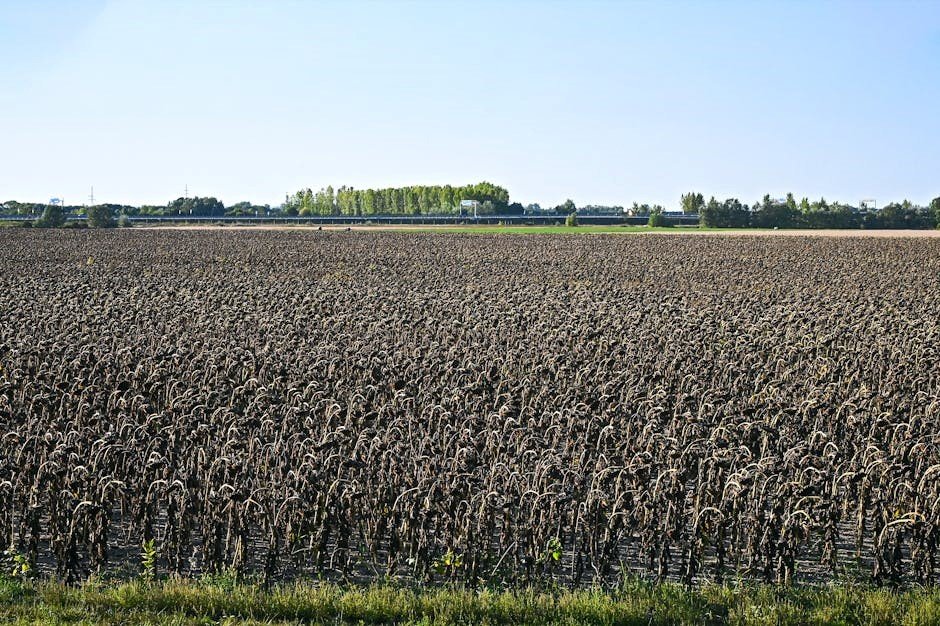
How Seeds Disperse
Gail Gibbons explains how seeds spread through wind, water, and animals, ensuring plants grow in new locations, promoting biodiversity and ecosystem balance.
4.1 Wind-Dispersed Seeds
Gail Gibbons highlights how wind-dispersed seeds, such as those from dandelions and cottonwood trees, are designed to travel long distances. These seeds are often lightweight and equipped with feathery structures or parachutes that catch the wind, allowing them to drift through the air. Some seeds spin or glide to cover more ground. Wind dispersal is especially common in open landscapes where plants benefit from spreading their seeds widely. This method ensures that seeds land in new areas, promoting genetic diversity and reducing competition for resources. Gibbons uses simple, engaging language to explain this natural process, making it easy for young readers to understand.
4.2 Animal-Dispersed Seeds
Gail Gibbons explains that many plants rely on animals to spread their seeds. These seeds often develop in fruits or pods that attract animals. For example, birds eat berries and deposit the seeds in new locations, often with natural fertilizer. Squirrels bury seeds, sometimes forgetting where they hid them, which allows new plants to grow. Some seeds even stick to animals’ fur or feathers, traveling far from the parent plant. This method ensures seeds reach diverse habitats, increasing the chances of successful growth. Gibbons describes how this mutual relationship benefits both plants and animals, highlighting nature’s clever strategies for seed dispersal and plant survival;
4.3 Water-Dispersed Seeds
Gail Gibbons discusses how some plants rely on water to disperse their seeds. These seeds are typically lightweight and buoyant, allowing them to float long distances. For example, coconut seeds can travel across oceans, while mangrove seeds germinate while floating. Water-dispersed seeds often have adaptations like waterproof coverings or irregular shapes to aid in their journey. Rivers, lakes, and coastal tides play a crucial role in spreading these seeds to new habitats. This method ensures seeds reach areas with fertile soil and adequate conditions for growth. Gibbons highlights how water dispersal contributes to the survival and diversity of plant species, showcasing nature’s resourceful strategies for propagation.
The Process of Growing a Plant from a Seed
Growing a plant from a seed involves sowing it in prepared soil, providing water, sunlight, and care. This section guides young readers through nurturing a seedling into a thriving plant, making botany fun and accessible for everyone.
5.1 Preparing the Soil
Preparing the soil is the first step in growing a plant from a seed. The soil must be loose and well-draining to allow roots to grow. Remove any debris, rocks, or weeds that could interfere with growth. Adding compost or fertilizer enriches the soil with essential nutrients. For young gardeners, the book suggests using gloves and small tools to dig and mix the soil. This step teaches children the importance of soil quality and its role in plant development. By preparing the soil, they learn how to create a healthy foundation for their seed to grow into a strong, thriving plant.
5.2 Planting the Seed
Planting the seed is a delicate process that requires care. The book guides young readers to dig a small hole at the right depth, typically two to three times the seed’s size. Gently placing the seed in the hole and covering it with soil is emphasized. Lightly patting the soil ensures good contact. Watering gently after planting helps settle the soil without washing away the seed. The book suggests using a spoon for small seeds to avoid over-handling. This step teaches children patience and the importance of gentle care in nurturing life. Proper planting sets the stage for successful germination and growth.
5.3 Providing Water and Sunlight
After planting, providing water and sunlight is essential for growth. The book explains that seeds need consistent moisture but shouldn’t be overwatered, as this can rot the seed. It advises watering gently but thoroughly. Sunlight is crucial for photosynthesis, and most plants require 4-6 hours of direct light daily. Placing the plant near a sunny window or outdoors in partial shade is recommended. The book emphasizes observing the plant’s response to light and adjusting its position if necessary. This step teaches children the balance of care needed for healthy growth, fostering responsibility and an understanding of a plant’s basic needs.
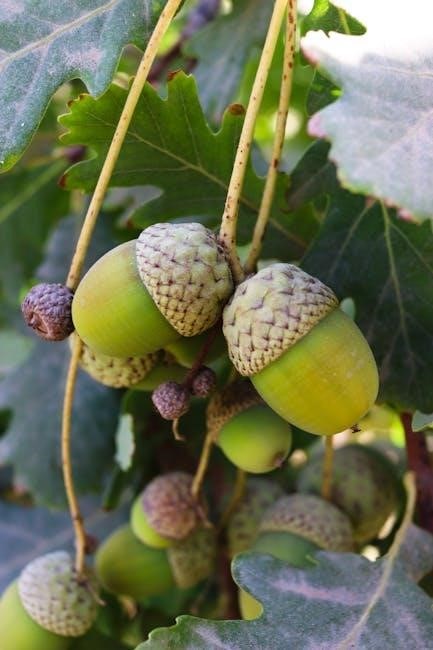
5.4 Observing Growth and Development
Observing growth and development is a crucial step in understanding how plants grow. Children are encouraged to watch their seedling daily, noting changes like the emergence of leaves or stem growth. The book suggests keeping a journal to record these observations, helping kids track progress and identify patterns. Over time, they’ll see the plant mature, producing flowers or fruit. This hands-on learning fosters curiosity and responsibility, as children witness the results of their care. The process teaches patience and the importance of consistent effort, while also highlighting the natural wonders of plant development. It’s a rewarding experience that deepens their connection to nature.
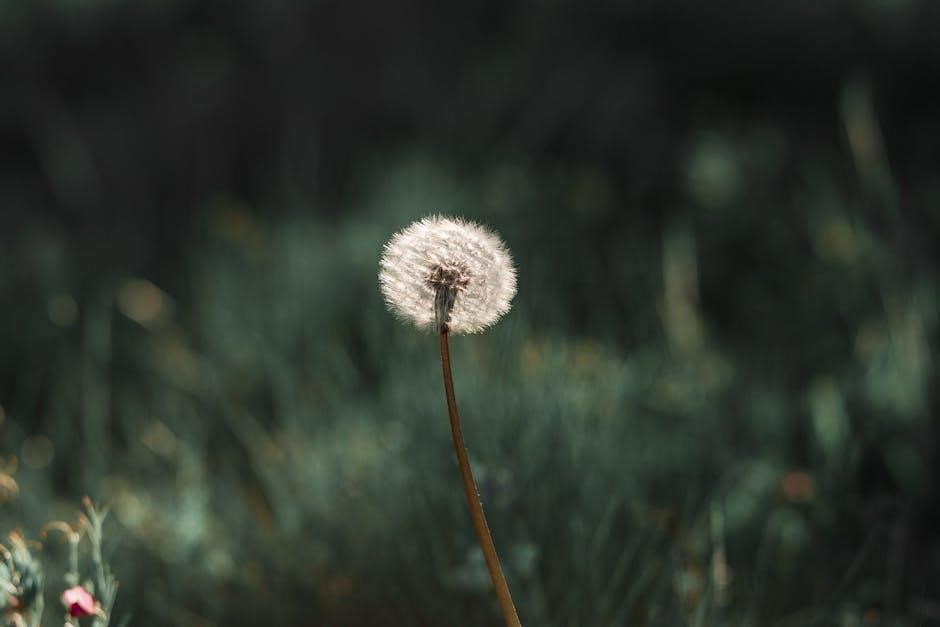
Educational Tools and Resources
The book provides educational tools like vocabulary cards and KWL charts. These resources help students engage with the material and enhance their learning experience effectively.
6.1 Vocabulary Cards for Key Terms
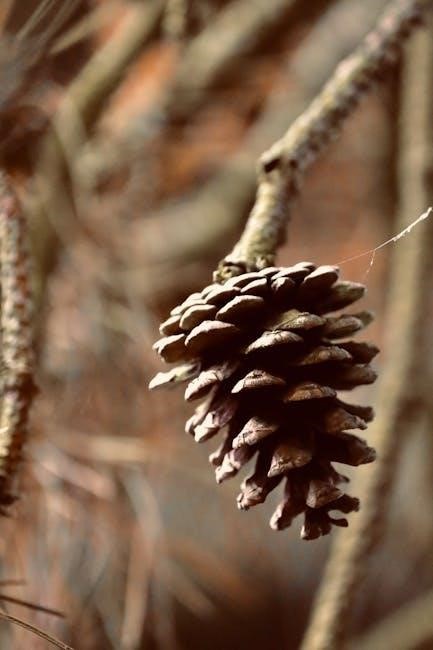
The book includes vocabulary cards that highlight essential terms like “germination,” “pollination,” and “photosynthesis.” These cards are designed to help young readers understand complex concepts through simple definitions and visuals. They serve as a quick reference tool, making learning interactive and engaging. Teachers and parents can use these cards to reinforce key botany terms, ensuring students grasp foundational ideas. The digital PDF format allows easy printing or sharing of these cards, making them accessible for classroom or homeschool use. By focusing on key terms, the cards enhance retention and provide a fun way to explore plant biology.
Additionally, the vocabulary cards encourage active learning by prompting discussions and further research. They align with the book’s content, ensuring a cohesive learning experience. This resource is particularly beneficial for visual learners, as it combines text with images to reinforce understanding. Overall, the vocabulary cards are a valuable educational tool that complements the book’s engaging narrative and illustrations, fostering a deeper appreciation for plant growth and development.
6.2 KWL Chart for Student Engagement
A KWL chart is a powerful tool to enhance student engagement while reading From Seed to Plant. It helps students organize their thoughts by dividing learning into three sections: what they already know, what they want to learn, and what they’ve learned. This interactive method encourages active participation and curiosity. Teachers can use the chart to assess prior knowledge and guide discussions. It also helps students track their progress and reflect on their learning journey. The chart aligns well with the book’s content, making it easier for young readers to connect with the material. By fostering critical thinking and collaboration, the KWL chart becomes a valuable educational resource.
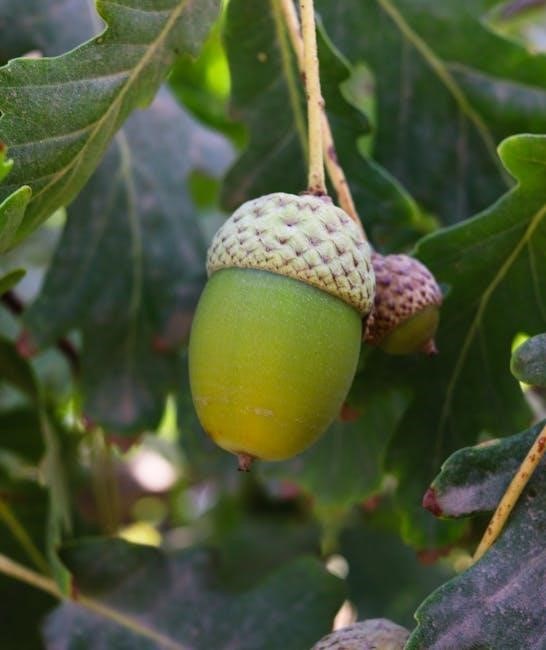
About the Author: Gail Gibbons
Gail Gibbons, an acclaimed children’s author, holds a degree in fine arts. Her career began in graphic design and television before transitioning to writing educational books for kids.
7.1 Gail Gibbons’ Background and Expertise
Gail Gibbons, a renowned author of children’s nonfiction, brings a wealth of expertise to her writing. With a background in fine arts, she initially worked in graphic design and television before dedicating herself to creating educational books for young readers. Her ability to simplify complex topics has made her a trusted name in children’s literature. Gibbons’ extensive research and clear, engaging style ensure that her books are both informative and accessible. Over the years, she has written more than 100 books, many of which have received critical acclaim for their accuracy and appealing presentation of scientific concepts.
7;2 Her Approach to Writing for Children
Gail Gibbons’ approach to writing for children is rooted in simplicity, clarity, and engagement. She specializes in breaking down complex scientific concepts into digestible language, making learning fun and accessible for young minds. Her books often feature bright, detailed illustrations that complement the text, helping children visualize and understand the subject matter. Gibbons also incorporates interactive elements, such as question-and-answer formats and step-by-step explanations, to foster curiosity and hands-on learning. By combining storytelling with factual information, she creates a unique blend of education and entertainment, inspiring children to explore the world around them with wonder and enthusiasm. This approach has made her a beloved author among both children and educators. Her dedication to clarity and creativity ensures that young readers remain captivated and informed.
7.3 Other Notable Works by the Author
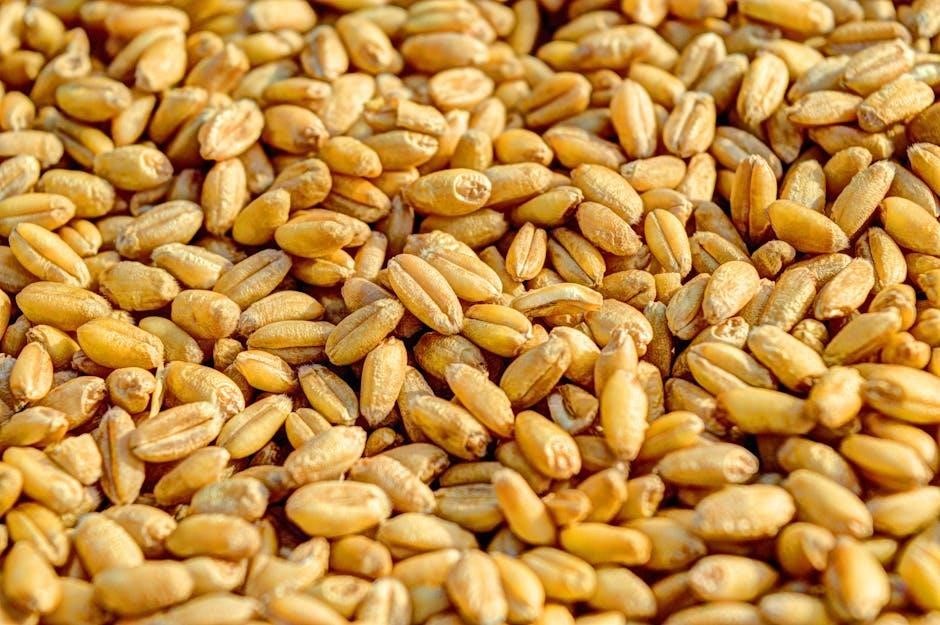
Gail Gibbons is a prolific author with a wide range of notable works. Some of her popular books include The Moon Book, which explores the lunar cycle, and Oxygen: The Breath of Life, introducing children to the importance of oxygen. Her book Migration! explains animal movements, while From Seed to Plant focuses on plant growth. These works showcase her ability to simplify complex topics for young readers. Her engaging style and informative content have made her a favorite among children and educators alike, ensuring her books are both entertaining and educational. Her contributions to children’s literature are highly regarded and widely appreciated.
Availability of the Book in PDF Format
The book “From Seed to Plant” by Gail Gibbons is readily available in PDF format, offering a convenient way to read and study its content digitally.
8.1 How to Access the PDF Version
To access the PDF version of “From Seed to Plant” by Gail Gibbons, visit legitimate online retailers or educational platforms. Websites like Amazon, Google Books, or Scribd often provide digital copies. Additionally, libraries and educational institutions may offer free access through their databases; Simply search for the title, select the PDF format, and follow the download or viewing instructions. Ensure you use authorized sources to avoid unauthorized downloads. This convenient format allows readers to enjoy the book on various devices, making it ideal for classroom use or personal study. Always verify the source’s legitimacy to support the author and publisher.
8.2 Benefits of the Digital Format
The digital format of “From Seed to Plant” offers numerous advantages for readers. It is easily accessible across multiple devices, such as tablets, smartphones, and computers, making it portable and convenient for learning on the go. The PDF version saves physical storage space, ideal for classrooms or homes with limited shelf capacity. It also allows for quick searches and zooming in on detailed illustrations, enhancing the learning experience. Additionally, the digital format reduces the environmental impact of printing, aligning with eco-friendly values. Students and educators can easily share the PDF for group activities or assignments, fostering collaborative learning while maintaining high-quality visuals and text clarity. This modern format ensures the book remains accessible and engaging for future generations, supporting both individual and classroom-based education effectively. By utilizing the digital version, readers can enjoy a seamless and interactive way to explore the wonders of plant growth and development. The digital format also enables easy updates, ensuring the content stays relevant and up-to-date with scientific discoveries. Overall, it provides a flexible and efficient way to learn about botany, making it a valuable resource for anyone interested in plant biology. The PDF version is particularly beneficial for visual learners, as it retains the vibrant illustrations that complement the text. Furthermore, it allows for highlighting and note-taking, enabling readers to interact with the material more deeply. This feature is especially useful for students who need to review and study key concepts for exams or projects. The digital format also supports accessibility features, such as text-to-speech, which can aid readers with disabilities. In conclusion, the PDF version of “From Seed to Plant” is a versatile and practical choice for anyone seeking to learn about plant biology in a modern and convenient way. It combines the benefits of technology with the educational value of the book, creating an enriched learning experience that caters to diverse needs and preferences. By choosing the digital format, readers can enjoy a more dynamic and interactive way to explore the fascinating world of plants. This accessibility ensures that the book’s educational content reaches a wider audience, promoting a greater understanding and appreciation of nature. The digital format also supports the growing trend of digital learning, making it easier for educators to incorporate the book into their curriculum. With its numerous benefits, the PDF version of “From Seed to Plant” is an excellent choice for both personal and educational use, providing a comprehensive and engaging learning experience that aligns with the demands of the digital age. The convenience, accessibility, and interactivity of the digital format make it an invaluable resource for anyone interested in botany and the natural world.

Companion Activities for the Book
Engage with hands-on activities like planting seeds, creating life cycle diagrams, or starting a plant journal to deepen understanding and make learning interactive and fun.
9.1 Planting a Garden
Planting a garden is an engaging way to bring the concepts of From Seed to Plant to life. Start by selecting seeds, preparing the soil, and following the steps outlined in the book. Students can observe how seeds germinate and grow, just like Gail Gibbons describes. This activity helps reinforce the book’s lessons on plant life cycles and the importance of sunlight, water, and nutrients. It also fosters responsibility and patience as children care for their plants. Encourage students to track their plant’s progress, noting changes and asking questions to deepen their understanding of botany and the natural world.
9.2 Creating a Life Cycle Diagram
Creating a life cycle diagram is an excellent way to visualize the journey of a plant, from seed to maturity. Students can draw or use visuals to represent stages like germination, growth, and seed formation. This activity aligns with Gail Gibbons’ detailed explanations in From Seed to Plant, making complex concepts accessible. By labeling each stage, students reinforce their understanding of plant development and the role of environmental factors. Encourage students to use colors and symbols to make their diagrams engaging. This hands-on activity fosters critical thinking and creativity while reinforcing the book’s lessons about nature and growth.
This book provides a clear, engaging journey through plant growth, perfect for young learners. It sparks curiosity about nature and encourages exploration of botany’s wonders.
10.1 Summary of Key Takeaways

“From Seed to Plant” by Gail Gibbons is an engaging guide that explores plant growth, seed development, and the roles of pollination and germination. It simplifies complex concepts for young readers, making botany accessible and fun. The book emphasizes the importance of observation and hands-on learning, encouraging children to explore the natural world. With vivid illustrations and clear explanations, it teaches the life cycle of plants, seed dispersal methods, and how to grow plants from seeds. This resource is ideal for classrooms and home learning, fostering curiosity and a deeper appreciation for nature and science. It leaves readers inspired to learn more about botany and the environment.
10.2 Encouragement to Explore Botany
“From Seed to Plant” by Gail Gibbons inspire readers to delve deeper into the fascinating world of botany. By understanding the life cycle of plants and the processes of growth, children gain a foundation for exploring nature. The book encourages hands-on activities, such as planting seeds or observing plants, to foster a connection with the natural world. It sparks curiosity and provides a starting point for further learning about the importance of plants in our ecosystem. This book motivates young learners to ask questions, explore, and appreciate the beauty and science of botany, setting the stage for a lifelong interest in nature and the environment.
Leave a Reply
You must be logged in to post a comment.